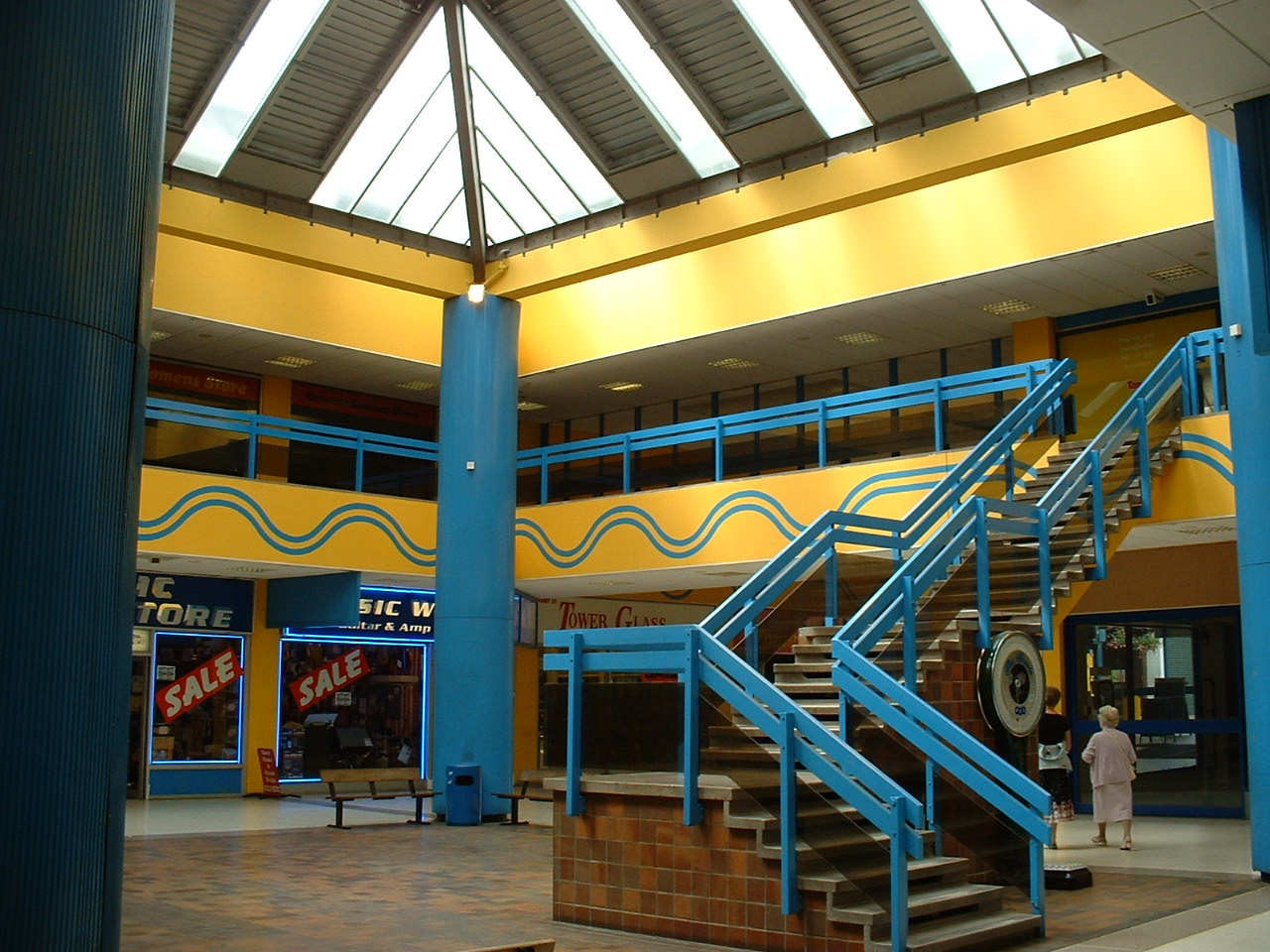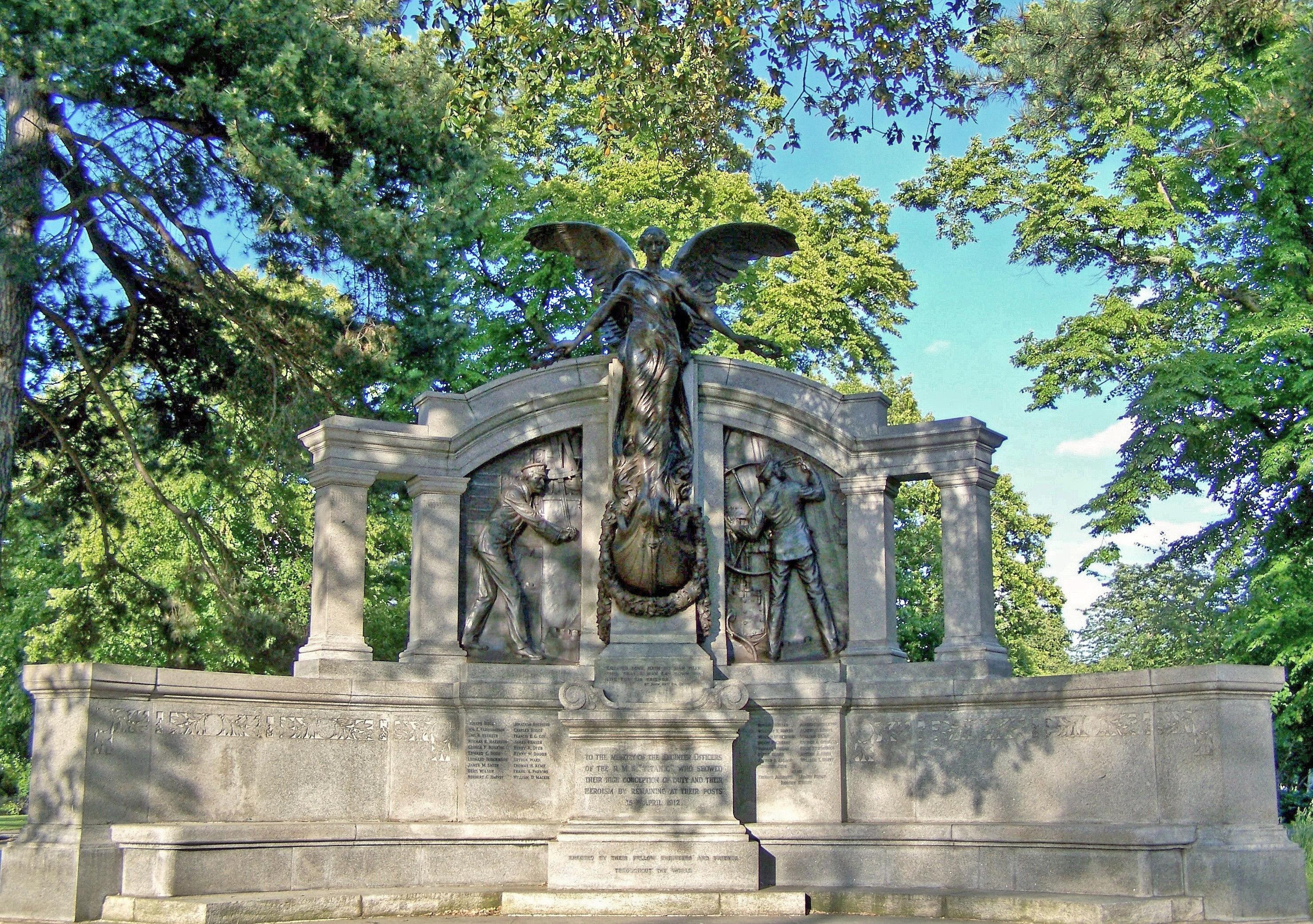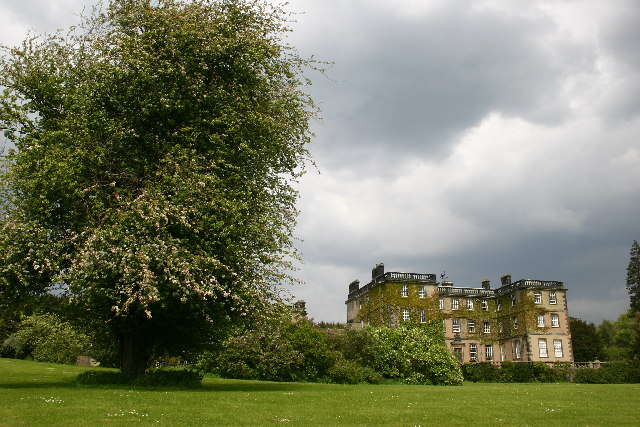|
Bargate
The Bargate is a Grade I listed medieval gatehouse in the city centre of Southampton, England. Constructed in Norman times as part of the Southampton town walls, it was the main gateway to the city. The building is a scheduled monument, which has served as a temporary exhibition and event space for Southampton Solent University since 2012. History The Bargate was built c. 1180, constructed of stone and flint. Alterations were made to the building around 1290, when large drum towers were added to the north side, with arrow slit windows. A two-storey extension was made to the south side towards the end of the 13th century, with four windows lighting the upstairs room. Work was also carried out to the interior of the upper room during the 13th century, when the stone fireplaces were installed. The embattled north front was added to the building around 1400. A survey of the town's guns in 1468 reported that the Bargate held two breach loader guns and a brass muzzle loader. It i ... [...More Info...] [...Related Items...] OR: [Wikipedia] [Google] [Baidu] |
Southampton City Centre
Southampton City Centre is the commercial and organisational centre of the City of Southampton, and the transport hub of the city. Because Southampton is on the South Coast of England, the city centre is not at the geometric centre of the city, but at the southern extremity. The traditional heart of the city is the High Street, which runs from the Town Quay to the Bargate, which was once the northern gateway to the walled city. As the city grew, this primary commercial area spread to the north of the Bargate, into Above Bar Street. Subsequent reclamation of land from Southampton Water to the west of the High Street meant further expansion in that direction, forming an area now known as West Quay and dominated by the modern Westquay shopping centre. When it opened, Westquay was the largest city-centre shopping centre in Europe, with around 100 shops. Culture There are several museums in the city centre, especially around the "Old Town" area. The museums include the Tudor Hou ... [...More Info...] [...Related Items...] OR: [Wikipedia] [Google] [Baidu] |
Southampton Town Walls
Southampton's town walls are a sequence of defensive structures built around the town in southern England. Although earlier Roman and Anglo-Saxon settlements around Southampton had been fortified with walls or ditches, the later walls originate with the move of the town to the current site in the 10th century. This new town was defended by banks, ditches and the natural curve of the river and coastline. The Normans built a castle in Southampton but made no attempts to improve the wider defences of the town until the early 13th century, when Southampton's growing prosperity as a trading centre and conflict with France encouraged the construction of a number of gatehouses and stone walls to the north and east sides of the settlement. In 1338 Southampton was raided by French forces; the town's defences proved inadequate, particularly along the quays on the west and south of the city. Edward III ordered some immediate improvements to Southampton's town walls but it was not until ... [...More Info...] [...Related Items...] OR: [Wikipedia] [Google] [Baidu] |
Southampton
Southampton () is a port City status in the United Kingdom, city in the ceremonial county of Hampshire in southern England. It is located approximately south-west of London and west of Portsmouth. The city forms part of the South Hampshire, South Hampshire built-up area, which also covers Portsmouth and the towns of Havant, Waterlooville, Eastleigh, Fareham and Gosport. A major port, and close to the New Forest, it lies at the northernmost point of Southampton Water, at the confluence of the River Test and River Itchen, Hampshire, Itchen, with the River Hamble joining to the south. Southampton is classified as a Medium-Port City . Southampton was the departure point for the and home to 500 of the people who perished on board. The Supermarine Spitfire, Spitfire was built in the city and Southampton has a strong association with the ''Mayflower'', being the departure point before the vessel was forced to return to Plymouth. In the past century, the city was one of Europe's mai ... [...More Info...] [...Related Items...] OR: [Wikipedia] [Google] [Baidu] |
Arrowslit
An arrowslit (often also referred to as an arrow loop, loophole or loop hole, and sometimes a balistraria) is a narrow vertical aperture in a fortification through which an archer can launch arrows or a crossbowman can launch bolts. The interior walls behind an arrow loop are often cut away at an oblique angle so that the archer has a wide field of view and field of fire. Arrow slits come in a variety of forms. A common one is the cross, accommodating the use of both the longbow and the crossbow. The narrow vertical aperture permits the archer large degrees of freedom to vary the elevation and direction of their bowshot, but makes it difficult for attackers to harm the archer since there is only a small target at which to aim. Balistraria, plural balistrariae, from balister, crossbowman can often be found in the curtain walls of medieval battlements beneath the crenellations. History The invention of the arrowslit is attributed to Archimedes during the siege of Syracuse ... [...More Info...] [...Related Items...] OR: [Wikipedia] [Google] [Baidu] |
Ascapart
Ascapart (also spelled ''Ascupart'', ''Ascapard'', ''Ascopard'', ''Ascopart'' and ''Asgapard'') was a legendary giant from English folklore, supposedly conquered by Bevis of Hampton, though so huge as to carry Bevis, his wife, and horse under his arm. He was 30 feet tall but the smallest of his land, and was defeated after his club (made from a whole tree) was swung at Sir Bevis and became stuck in soft ground. Rather than slaying the giant however, Sir Bevis decided to make him his Squire. Later Ascapart betrayed Bevis and took his wife Josiane, who was imprisoned with Ascapart as her jailer. For this Ascapart was killed by Bevis' friends when they freed Josiane. In later adaptations of the legend, Ascapard becomes a giant half-man half-dog and his name becomes Pelucan (also ''Pulicane'', ''Pulican'', ''Pelukan''). In the Russian version of the tale, , the character becomes Polkan, a centaur. The name Ascapard may refer to "A desert people of the near east" according to the ... [...More Info...] [...Related Items...] OR: [Wikipedia] [Google] [Baidu] |
Frederick Tylney
Frederick may refer to: People * Frederick (given name), the name Nobility Anhalt-Harzgerode * Frederick, Prince of Anhalt-Harzgerode (1613–1670) Austria * Frederick I, Duke of Austria (Babenberg), Duke of Austria from 1195 to 1198 * Frederick II, Duke of Austria (1219–1246), last Duke of Austria from the Babenberg dynasty * Frederick the Fair (Frederick I of Austria (Habsburg), 1286–1330), Duke of Austria and King of the Romans Baden * Frederick I, Grand Duke of Baden (1826–1907), Grand Duke of Baden * Frederick II, Grand Duke of Baden (1857–1928), Grand Duke of Baden Bohemia * Frederick, Duke of Bohemia (died 1189), Duke of Olomouc and Bohemia Britain * Frederick, Prince of Wales (1707–1751), eldest son of King George II of Great Britain Brandenburg/Prussia * Frederick I, Elector of Brandenburg (1371–1440), also known as Frederick VI, Burgrave of Nuremberg * Frederick II, Elector of Brandenburg (1413–1470), Margrave of Brandenburg * Frederick Willia ... [...More Info...] [...Related Items...] OR: [Wikipedia] [Google] [Baidu] |
Charles Paulet, 2nd Duke Of Bolton
Charles Paulet, 2nd Duke of Bolton (1661 – 21 January 1722) was Lord Lieutenant of Ireland, Member of Parliament for Hampshire and a supporter of William III of Orange. Life He was the son of Charles Paulet, 1st Duke of Bolton, and Mary Scrope, daughter of Emanuel Scrope, 1st Earl of Sunderland. From 1675 (when his father succeeded as Marquess of Winchester) until April 1689 (when his father was created 1st Duke of Bolton), he was styled Earl of Wiltshire. From 1689 until his succession to the Dukedom in 1699 he was styled Marquess of Winchester. He was Lord Lieutenant of Hampshire and Dorset, a commissioner to arrange the union of England and Scotland, and was twice a lord justice of the kingdom. He was also lord chamberlain of the royal household and Governor of the Isle of Wight. In Jonathan Swift's tract ''Remarks on the Characters of the Court of Queen Anne'', a commentary on the book ''Memoirs of the Secret Services'' by John Macky, in response to Macky's s ... [...More Info...] [...Related Items...] OR: [Wikipedia] [Google] [Baidu] |
Charles Paulet, 1st Duke Of Bolton
Charles Paulet, 1st Duke of Bolton (c. 1630 – 27 February 1699), was an English nobleman, the son of John Paulet, 5th Marquess of Winchester, and his first wife, Jane Savage. Career Paulet succeeded his father as the sixth Marquess of Winchester in 1675. He was MP for Winchester in 1660 and then for Hampshire from 1661 to 5 March 1675. Before his succession to the Marquessate he was styled Lord St John. He held the following offices: * Freeman, Winchester June 1660, Hartlepool 1670 * Justice of the Peace Hampshire July 1660-?d., Yorkshire (North Riding) 1664-?85, Surrey, Middlesex and Westminster 1671-?80, (East Riding) by 1680-85 * Commissioner for assessment, Hampshire August 1660–75, N. Riding 1663–75, West and East Ridings and County Durham 1673-5 * Commissioner for loyal and indigent officers, Hampshire 1662 * Lord Lieutenant Hampshire 1667–76, 1689-1699; * Warden of the New Forest 1668–76, 1689-1699 * High Steward, Winchester 1669-84 * Custos rot ... [...More Info...] [...Related Items...] OR: [Wikipedia] [Google] [Baidu] |
Andrew The Apostle
Andrew the Apostle ( grc-koi, Ἀνδρέᾱς, Andréās ; la, Andrēās ; , syc, ܐܰܢܕ݁ܪܶܐܘܳܣ, ʾAnd’reʾwās), also called Saint Andrew, was an apostle of Jesus according to the New Testament. He is the brother of Simon Peter and is a son of Jonah. He is referred to in the Orthodox tradition as the First-Called ( grc-koi, Πρωτόκλητος, Prōtoklētos, label=none). According to Orthodox tradition, the apostolic successor to Andrew is the Patriarch of Constantinople. Life The name "Andrew" (meaning ''manly, brave'', from grc-gre, ἀνδρεία, andreía, manhood, valour), like other Greek names, appears to have been common among the Jews and other Hellenized people since the second or third century B.C. MacRory, Joseph. "St. Andrew." The Catholic Encyclopedia Vol. 1. ... [...More Info...] [...Related Items...] OR: [Wikipedia] [Google] [Baidu] |
Western Daily Press
The ''Western Daily Press'' is a regional newspaper covering parts of South West England, mainly Gloucestershire, Wiltshire and Somerset as well as the metropolitan areas of Bath and North East Somerset and the Bristol area. It is published Monday to Saturday in Bristol, UK. The majority of its readers are in rural areas, small towns and villages throughout the region and the paper's coverage of rural, agricultural and countryside issues is particularly strong. It also has a good record in picking up quirky and bizarre stories which would otherwise not be publicised. Politically it tends to be conservative although its coverage of the UK ban on fox hunting was neutral, recognising that even in rural areas people are very divided on the issue. Founding It was founded by Scottish businessman Peter Stewart Macliver and Newcastle journalist Walter Reid and first published on 1 June 1858. Macliver went on to found the '' Bristol Observer''. Twentieth century The ''Western Dail ... [...More Info...] [...Related Items...] OR: [Wikipedia] [Google] [Baidu] |
Heraldic Shields On The Northern Side Of Bargate
Heraldry is a discipline relating to the design, display and study of armorial bearings (known as armory), as well as related disciplines, such as vexillology, together with the study of ceremony, rank and pedigree. Armory, the best-known branch of heraldry, concerns the design and transmission of the heraldic achievement. The achievement, or armorial bearings usually includes a coat of arms on a shield, helmet and crest, together with any accompanying devices, such as supporters, badges, heraldic banners and mottoes. Although the use of various devices to signify individuals and groups goes back to antiquity, both the form and use of such devices varied widely, as the concept of regular, hereditary designs, constituting the distinguishing feature of heraldry, did not develop until the High Middle Ages. It is often claimed that the use of helmets with face guards during this period made it difficult to recognize one's commanders in the field when large armies gathered together ... [...More Info...] [...Related Items...] OR: [Wikipedia] [Google] [Baidu] |
Lime Mortar
Lime mortar or torching is composed of lime and an aggregate such as sand, mixed with water. The ancient Egyptians were the first to use lime mortars, which they used to plaster their temples. In addition, the Egyptians also incorporated various limes into their religious temples as well as their homes. Indian traditional structures built with lime mortar, which are more than 4,000 years old like Mohenjo-daro is still a heritage monument of Indus valley civilization in Pakistan. It is one of the oldest known types of mortar also used in ancient Rome and Greece, when it largely replaced the clay and gypsum mortars common to ancient Egyptian construction. With the introduction of Portland cement during the 19th century, the use of lime mortar in new constructions gradually declined. This was largely due to the ease of use of Portland cement, its quick setting, and high compressive strength. However, the soft and porous properties of lime mortar provide certain advantages when wor ... [...More Info...] [...Related Items...] OR: [Wikipedia] [Google] [Baidu] |



.jpg)


